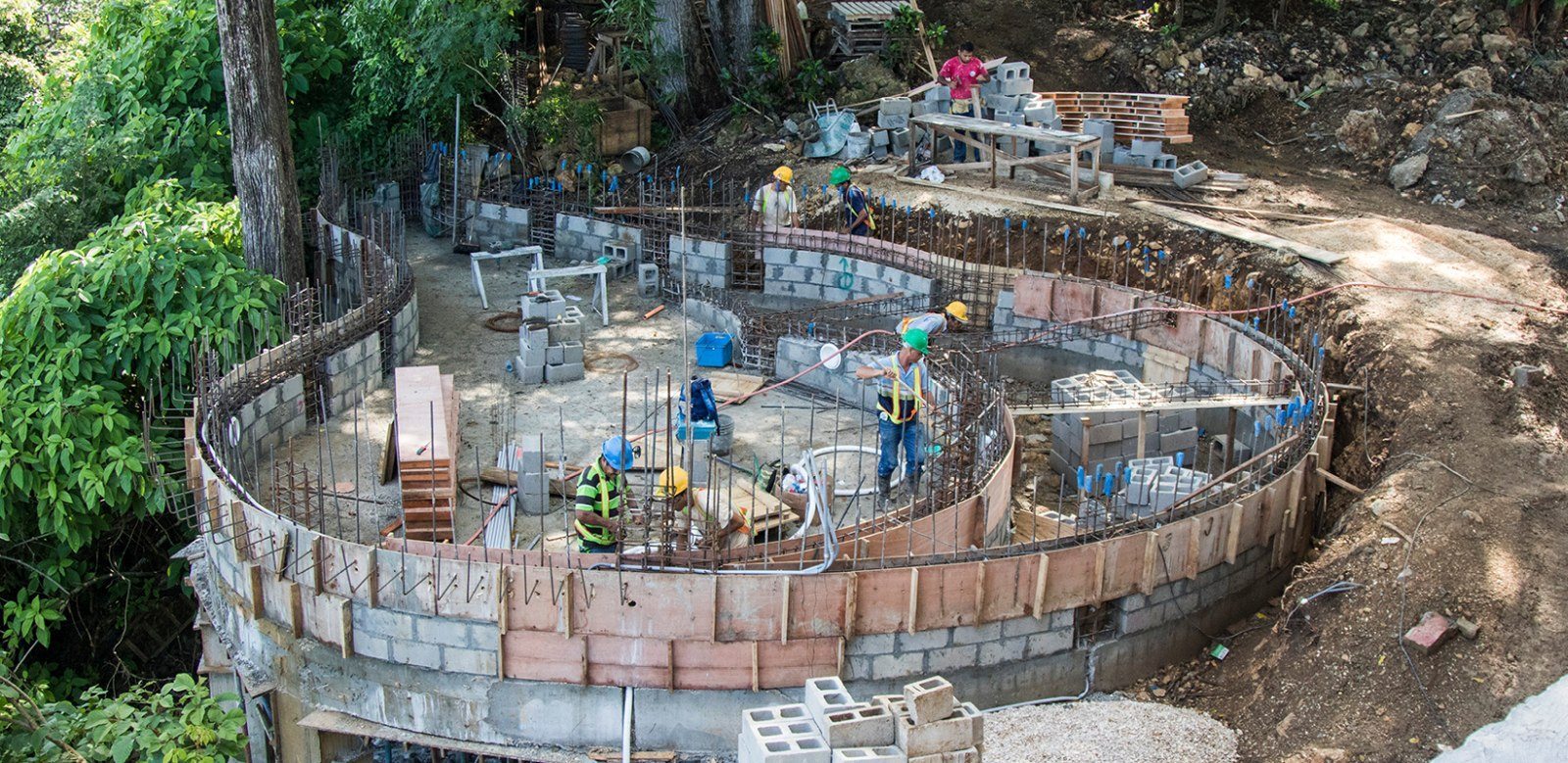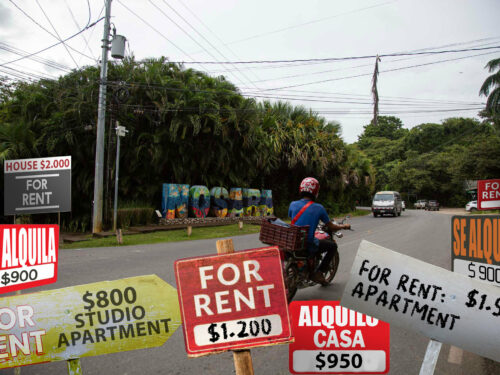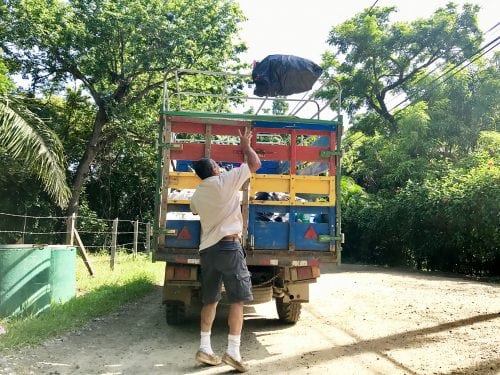
An error by the Playas de Nosara rural water association, or asada, was the first domino to fall in a series of irregularities that opened the door to expansion by Hotel Lagarta Lodge before officials possessed technical studies evaluating the rural aqueduct’s capacity. The studies are necessary to guarantee enough water is available for development without placing the community at risk.
Faced with growing concern by residents who have confronted water shortages each summer for the past five years, members of the local asada now hope to correct their errors and halt the hotel’s expansion. They claim that hotel operators manipulated the process and a new technical study is needed. They also say municipal officials never should have granted construction permits.
Do the allegations have merit? The Voice of Guanacaste scoured public documents, reviewed current regulations and conducted interviews with all of the principle actors involved in the ongoing conflict.
We found that the asada committed at least three procedural irregularities, and the municipality allowed construction permits based on a letter containing errors regarding the rural aqueduct. So far, we have found no evidence that hotel owners committed irregularities.
According to Andrea Chacón, legal adviser for asadas at the Costa Rican Water and Sewer Institute, or AyA, based on current regulations, the asada is entirely responsible for what has happened so far in this case. The asada, she said, serves as the first filter through which any type of real estate development must pass before initiating construction.
The explanation is long. If you’re short on time, here is a brief summary of the asada’s errors:
–FIRST ERROR: The asada issued water capacity letters without specifying the improvements needed for the aqueduct to guarantee water availability to the development without placing the community at risk.
–SECOND ERROR: The technical study contracted by the asada to demonstrate how the hotel’s expansion could affect the rural aqueduct contained significant technical errors. This resulted in the AyA rejecting the study.
–THIRD ERROR: The asada solicited cash from the new owners of Hotel Lagarta Lodge (more than $90,000) with which it would build a new well, based on a study by a researcher contracted by the asada and paid for by the hotel. Only the AyA can approve the perforation of a new well, and developers should never give money to an asada.
The 1st Error
From March to November 2015, the local asada, which administers a rural aqueduct for Guiones and Pelada, issued the hotel six letters certifying water capacity without specifying what improvements to the aqueduct’s infrastructure were required before work on the project began. (See the letter here)
Aqueduct administrators are the first line of defense in projects involving all types of real estate development, and developers must obtain approval from them to continue processing paperwork on projects. If approval requires a technical study, installation of more tubing or well perforation, it should be clearly stated in a letter, according to Article 20 of AyA’s Service Provider Regulations.
“Additionally, this document should itemize technical requirements for infrastructure works that could be carried out by the applicant in order to facilitate availability of required services,” the regulation states.
Because the asada did not specify, the municipality assumed the aqueduct has the capacity to provide sufficient water to the hotel, according to municipal engineer Josué Ruiz, who handled the case. Therefore, the municipality proceeded to expedite construction permits.
“At the municipality, what we’re interested in is that (the aqueduct) has the capacity and water availability,” Ruiz said. “In this case, you have to consider the fact that the hotel already existed, so it’s a service subscriber. Availability already is there. If they tell me they have water for the project, I can’t question it. By law I can’t do that.”
The asada acknowledges this was its first mistake on the project.
“The asada’s main error was not stating in the hydric capacity letter the construction needed” to improve the system, acknowledged asada attorney Daniel Espinoza in a telephone interview.
Nevertheless, a few days later Espinoza sent a document to the Nicoya Municipality alleging the municipality had committed an “illegal act” by issuing construction permits without a letter certifying availability of services.
Availability of what? Let’s digress: There are two letters the AyA or the asadas can issue to a developer when that developer seeks water to build something. One is “availability of service,” and the other is “hydric capacity.”
The first indicates the aqueduct already has ramification (or tubing) to the location where the new development will be built, as well as the water. This is the harmony letter: Everyone is happy.
The second is issued only when an asada determines, based on its own measurements, that water does exist, but there are no means to transport it to the development, and more infrastructure must be built.
This is the letter of discord in this case: On one side, the asada alleges the municipality cannot issue a construction permit based on this document. On the other, the AyA and the municipality agree that if the letter does not contain the necessary specifications, the municipality’s interpretation was correct.
“I wouldn’t dare blame the municipality. If a letter arrives stating there is hydric capacity and it doesn’t say that it requires more development, install a tank, or whatever, it is assumed that it isn’t required. You can’t go beyond what’s in the document,” the AyA’s Chacón said.
Fragmented Process
Residents covered by the Playas de Nosara Asada began to worry when they saw the scope of the hotel’s new construction, which includes a restaurant that stands out above the trees and is the most visible construction, along with 14 new rooms (12 others already exist), a multiuse salon for 60 people and two swimming pools. Some 200 neighbors signed a letter urging the municipality to investigate Hotel Lagarta Lodge, alleging that construction had started without a water permit from the asada.
The asada also denounced the hotel several times to the municipality and to The Voice of Guanacaste for utilizing what was considered an “incorrect procedure.” The complaints referred to the hotel’s filing of water requests one-by-one in different months in 2015, and for filing them for separate lots. (See Timeline at the end of story.)
“It was a complete manipulation of the process. We didn’t suspect anything, but later neighbors began asking us what was happening,” current asada president Elizabeth Adams said in an initial interview with The Voice of Guanacaste last August.
“For me, it was different applications. I didn’t see it in the context. I knew they were renovating Lagarta, but I had no idea this was for the project,” she added.
Hotel Lagarta Lodge spokesman Óscar López said the permits were sought sporadically because that was how the project was thought out: in parts. He added that each of the six letters has the name of the public limited company under which the hotel is registered: Panorama Lagarta Ltda.
“It’s strange that they wouldn’t know it’s the same development. Honestly, it was in stages because that’s how it was conceived,” said López, who insisted the hotel is prepared to address water scarcity in summer months because it has its own well concession from which it can draw water if the necessary infrastructure is built.
More Errors
As local residents grew alarmed over the project’s magnitude, the asada demanded developers pay for a technical study to determine the impact construction would have on the aqueduct.
That technical study should be conducted before water permits are issued for a project, not after. When an asada has doubts regarding capacity, it should consult its own data and verify if there are problems with water levels and request a technical study from the developer to evaluate the impact new construction would have.
Engineer Freddy Zúñiga, chosen by the asada to conduct the study, recommended construction of an additional well to avoid the effects of lack of rainfall, but after reviewing the study, the AyA determined the engineer’s recommendation had no technical basis.
The Playas de Nosara Asada made another mistake upon soliciting funds needed to build the well and improve infrastructure – more than $100,000 at the time – directly from developers.
“It is over $100,000 (that) we asked (for) the improvement of the infrastructure,” Adams said.
The study actually indicates a lesser amount of $90,292 for improvements including construction of a well perforated at a depth of 100 meters.
The AyA’s Chacon said that in any case, asadas are not authorized by law to receive money in exchange for services that go beyond tariffs established by the regulatory agency ARESEP, except donations. They also can’t initiate construction of a well without a technical study approved by the AyA.
“The AyA determines all of this, that there isn’t an overcharge for the developer,” Chacón said.
A document reviewing Zúñiga’s technical study, drafted by AyA engineer Esteban Morales, also states this.
Asking for funds in cash “is completely incorrect and outside the rules and the law,” Morales’ document states. “The applicant should be the one to build the works determined by the technical study after they’re approved by the AyA.” (See the document here)
But in practice, the opposite has shown to be true.
“The law establishes that all types of investment must be authorized by the AyA. Nevertheless, that has never been done by the Playas de Nosara Asada. The AyA is perfectly aware of this method of operating. It is perfectly normal,” asada attorney Daniel Espinoza said.
A Daily Conflict
If this conflict between a hotel and an asada seems like a specific case in a single community, readers should know that it actually is the tip of the iceberg.
Disagreements between developers and asadas, as well as irregularities in processes established by the AyA and those followed by municipalities and rural aqueducts are not isolated events. Instead, they point toward a trend. Those involved in the current conflict and those at AyA have both made that clear.
“I work with several asadas, and they’ve always worked that way. Developers provide the funds and the asadas build the project,” said Espinoza, who said that starting now, the Playas de Nosara Asada would modify its procedures to adjust to rules established by the AyA.
This type of behavior can cause problems for both sides. On one side, asadas can use funds to conduct repairs that aren’t the responsibility of business owners. On the other, calculations can sometimes come up short, in which case an asada would be responsible for additional costs.
Chacón said the AyA has a legal advisory department specifically for this purpose, and it is in the process of training asadas and municipalities to appropriately file letters and expedite permits to avoid long conflicts such as this one, which has been torturing the community for almost a year.








Comments